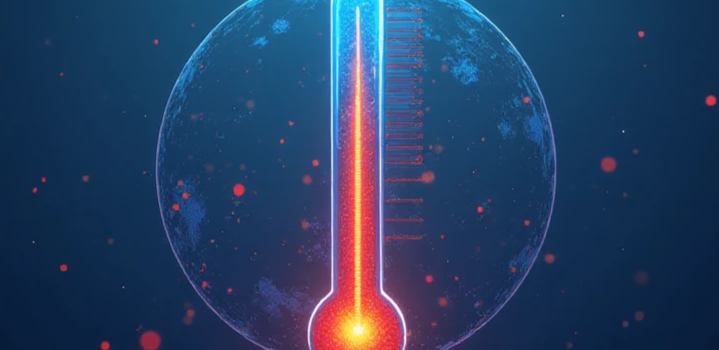Conversion of Physical Quantities: Temperature

Temperature is a measure of thermal energy or heat intensity. It plays a pivotal role in numerous fields, ranging from meteorology and thermodynamics to industrial processes and everyday activities. Below is a comprehensive guide covering temperature scales, their origins, practical uses, and common conversions.
Major Temperature Scales
There are four primary temperature scales used globally:
- Celsius Scale (°C)
- Developed by Swedish astronomer Anders Celsius in 1742. He initially reversed the current order (freezing point at 100°C, boiling point at 0°C), later corrected by Jean-Pierre Christin.
- Uses: Weather forecasts, general scientific and medical applications.
- Fahrenheit Scale (°F)
- Created by German physicist Daniel Gabriel Fahrenheit in 1724. His original freezing point was set at 32 °F, boiling point at 212 °F.
- Uses: Primarily in the USA, Belize, Bahamas, and Palau.
- Kelvin Scale (K)
- Established by William Thomson (Lord Kelvin) in 1848. Absolute zero (−273.15 °C) marks the lowest possible temperature.
- Uses: Thermodynamic equations, astrophysics, engineering.
- Rankine Scale (°R)
- Similar to Kelvin but uses Fahrenheit intervals, proposed by Scottish engineer William John Macquorn Rankine. Zero starts at absolute zero (-459.67 °F).
- Uses: Limited application mainly in engineering contexts dealing with gas laws.
Important Temperature Reference Points
Some notable temperatures across different scales:
- Freezing Point of Water: 0 °C, 32 °F, 273.15 K, 491.67 °R
- Boiling Point of Water: 100 °C, 212 °F, 373.15 K, 671.67 °R
- Room Temperature: Approximately 20–25 °C, 68–77 °F, 293–298 K, 527–536 °R
Why Different Scales Exist
Various scales emerged out of necessity:
- Celsius/Fahrenheit: For everyday use, especially pre-industrial era.
- Kelvin/Rankine: Essential for advanced scientific theories, particularly in thermodynamics.
Today, temperature conversions enable global collaboration in fields like weather forecasting, materials testing, food preparation, and environmental monitoring.
By mastering these concepts, anyone can confidently handle temperature-related challenges across disciplines.
| Temperature Scale | Relation to Celsius (°C) | Relation to Kelvin (K) | Relation to Fahrenheit (°F) |
| Celsius | Base Unit | K = °C + 273.15 | °F = (°C × 9/5) + 32 |
| Kelvin | °C = K – 273.15 | Base Unit | °F = (K × 9/5) – 459.67 |
| Fahrenheit | °C = (°F – 32) × 5/9 | K = (°F + 459.67) × 5/9 | Base Unit |
| Rankine | °C = (°R × 5/9) – 273.15 | K = °R × 5/9 | °F = °R – 459.67 |
FAQs on Temperature Conversion
What is the freezing point of water in Celsius, Fahrenheit, and Kelvin?
At sea level pressure, water freezes at 0°C, 32°F, and 273.15K.
How hot is boiling water in Celsius, Fahrenheit, and Kelvin?
Boiling occurs at 100°C, 212°F, and 373.15K respectively.
What is absolute zero?
The coldest theoretically achievable temperature, corresponding to 0K, -273.15°C, or -459.67°F.
Why is Celsius called “degrees”?
Because Anders Celsius originally created his scale with 100 evenly spaced gradations between freezing and boiling points of water.
What is the advantage of using Kelvin over Celsius?
Kelvin begins at absolute zero, eliminating negative values seen in Celsius. Also, Kelvin simplifies thermodynamic calculations.
What is the significance of Rankine scale?
Like Kelvin, Rankine begins at absolute zero but uses Fahrenheit-sized increments. Mainly used in engineering applications.
What is the definition of a degree in Fahrenheit?
Daniel Fahrenheit established fixed points for saltwater freezing and human body temperature, creating intermediate degrees between these points.
Why isn’t Celsius/Fahrenheit/Kelvin interchangeable everywhere?
Different systems arose independently based on cultural/scientific preferences. Science prefers Kelvin for consistency, while everyday life tends to stick with locally favored scales.
What is the boiling point of alcohol?
Ethanol boils at about 78.37°C (173.07°F), lower than water due to weaker hydrogen bonding.
How many degrees Fahrenheit are in a degree Celsius?
Each degree Celsius represents 1.8 degrees Fahrenheit (9/5 ratio).
Why does steam feel hotter than boiling water?
Steam carries latent heat absorbed during evaporation, transferring additional energy when condensing back into liquid.
How cold is Antarctica’s record low temperature?
Minus 89.2°C (-128.6°F) recorded at Vostok Station in July 1983.
What is room temperature?
Typically ranges from 20°C to 25°C (68°F to 77°F), though variations exist geographically.
What causes metal handles to seem colder than wood?
Metal conducts heat faster, drawing warmth away from skin rapidly, giving the sensation of being cooler.
Why doesn’t ice melt instantly above 0°C?
Latent heat absorption slows melting until sufficient energy disrupts crystal bonds.
Why do people feel chilly near bodies of water?
Evaporative cooling effects reduce perceived air temperature near lakes/oceans, enhancing wind chill sensations.
Why is Earth’s core hotter than surface lava flows?
Radioactive decay and gravitational compression generate intense heat deep underground, reaching estimated 5,000°C+.
How hot is lightning?
Lightning bolts can reach temperatures exceeding 30,000°C (54,000°F), five times hotter than Sun’s surface.